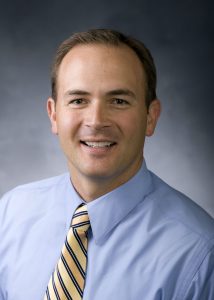
Sexuality can be a difficult topic for parents, educators and ecclesiastical leaders to address. But The Church of Jesus Christ of Latter-day Saints has provided a number of resources detailing a variety of issues in sex education.
During Sunday meetings, similar lesson plans are provided to Young Men and Young Women groups for teaching chastity. They include videos, General Conference talks and questions for discussion.
In addition, the church provides the Ministering Resources website to help bishops and other church leaders address issues such as addiction, marital conflict and same-sex attraction. One section is geared toward those who have been abused and another is geared toward abusers.
“The Savior’s love and Atonement will strengthen, heal and bless all who exercise faith in him,” President Thomas S. Monson says in the website’s overview video.
According to the video, each resource is divided into four sections: questions for understanding the situation and creating trust, steps the individual can take to address his or her problem, suggestions for supporting the family of the struggling individual, and additional ward and stake resources individuals can use. These sections include references to scripture, church policy and teachings from church leaders. The resources, however, can only be accessed by ward and stake council members.
For parents, the Mormon Channel has produced a series of videos titled, “Family Conversations: Talking about Healthy Sexuality.” Each brief video includes interviews with Jill Manning, a licensed marriage and family therapist, and Jason Carroll, a BYU professor of marriage and family studies. They address topics such as why parents should teach their children about sex, what should be shared about sex and how to include the Spirit in such discussions.
In one video titled “What’s the biggest difference between what the world teaches and what the gospel teaches about sexuality?” Carroll says practices like immodesty objectify the body, and the dominant message many young people get from the world is that sexuality is solely a physical experience.
On the flip side, it is also a problem when church members think anything involving the body is “the natural man” and the spirit must completely overcome it.
“It’s this ‘sex or salvation’ idea,” he said. “It’s not ‘sex and salvation.’ The true doctrine is the unity of the spirit and the body.”
Carroll said it’s important to help young people unify their spirituality and sexuality in a healthy balance.
Other church resources include a video in the LDS media library titled “What are some things not to do when teaching children about sex?” and a family home evening resource book lesson titled “Teaching about Procreation and Chastity.” In addition, the 2017 “Report on the Campus Climate Survey on Sexual Assault” from BYU assessed how sexual assaults are reported and investigated at BYU. The university currently provides a number of resources including the Women’s Services and Resources office and the Counseling and Psychological Services office. They also provide online training about sexual misconduct awareness and what victims of sexual assault need to know.
The church isn’t the only organization with resources. The Utah County Health Department provides sexually transmitted disease services, including a HIV testing clinic. They also have a sexual education curriculum called “Choosing the Best,” intended for use in schools.
Brett Jones, a certified health specialist and the abstinence coordinator with the Utah County Health Department, works with schools in Provo to train health teachers who want to use the curriculum.
Jones said he sees several societal problems with how boys and girls are taught differently about sexuality. Particularly in Utah county, he said girls are often seen as promiscuous if they’re sexually active, while boys are seen as “players.” Resolving those mindsets, he said, begins with individual families, though he said interventions in schools can also be helpful.
He also said it’s best to teach both girls and boys about sex in a straightforward manner, and both groups need “the whole picture” when it comes to sexual education.
“I think guys need to know about girls and how they feel and what’s going on with their anatomy and how they should be treated, and the same thing goes for girls,” Jones said.
He added that parents feel a lot of pressure when approaching this topic with their children, but that they can gauge the best way to handle their children’s sexual education by seeing how they react when the topic is brought up. While the conversations should always be age-appropriate, Jones said it’s important to start a child’s sex education as soon as possible.
“Some children are going to be a little more prepared at an earlier age,” Jones said. “Where some children it’s going to take longer for them to have those types of conversations.”




